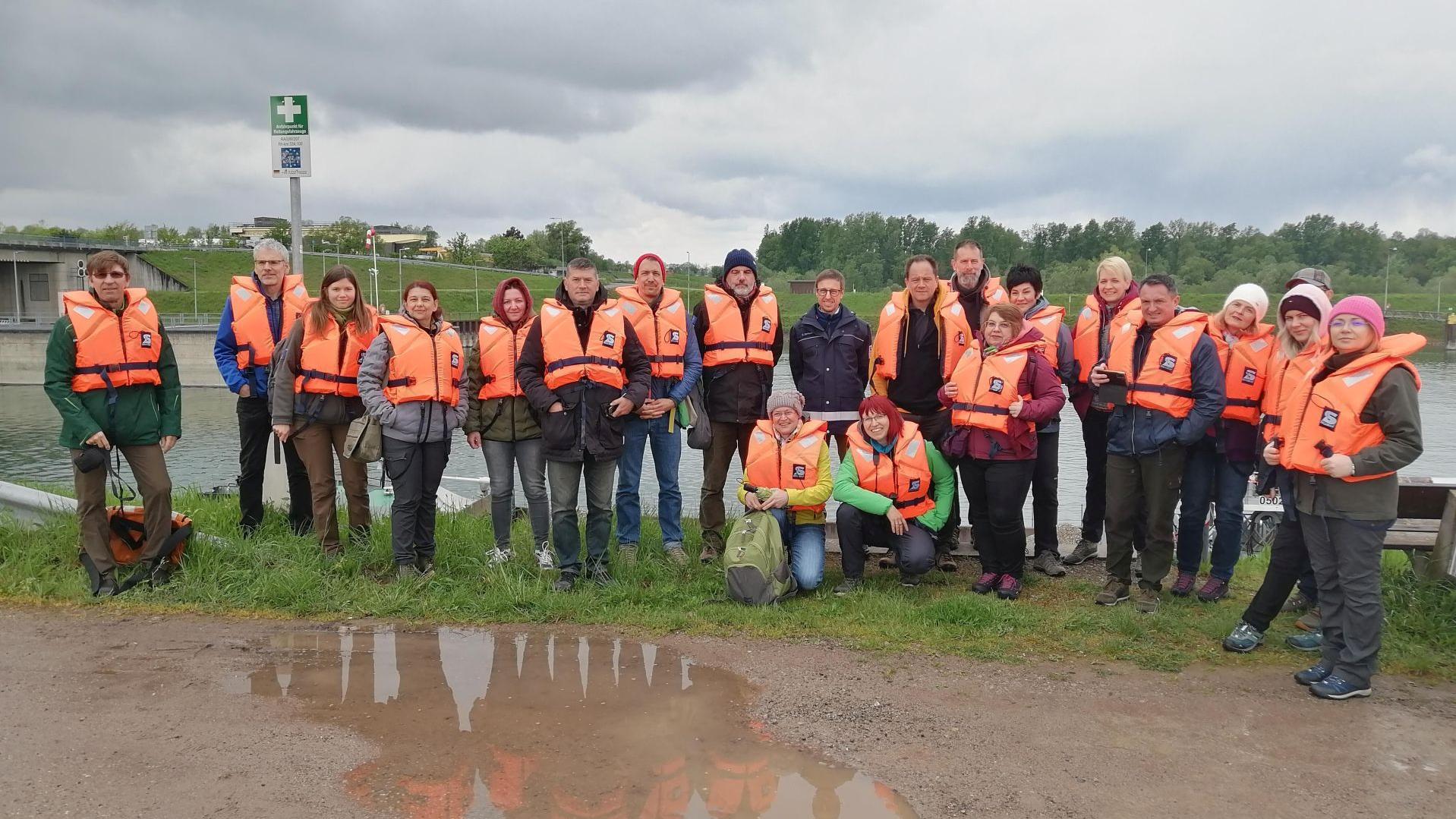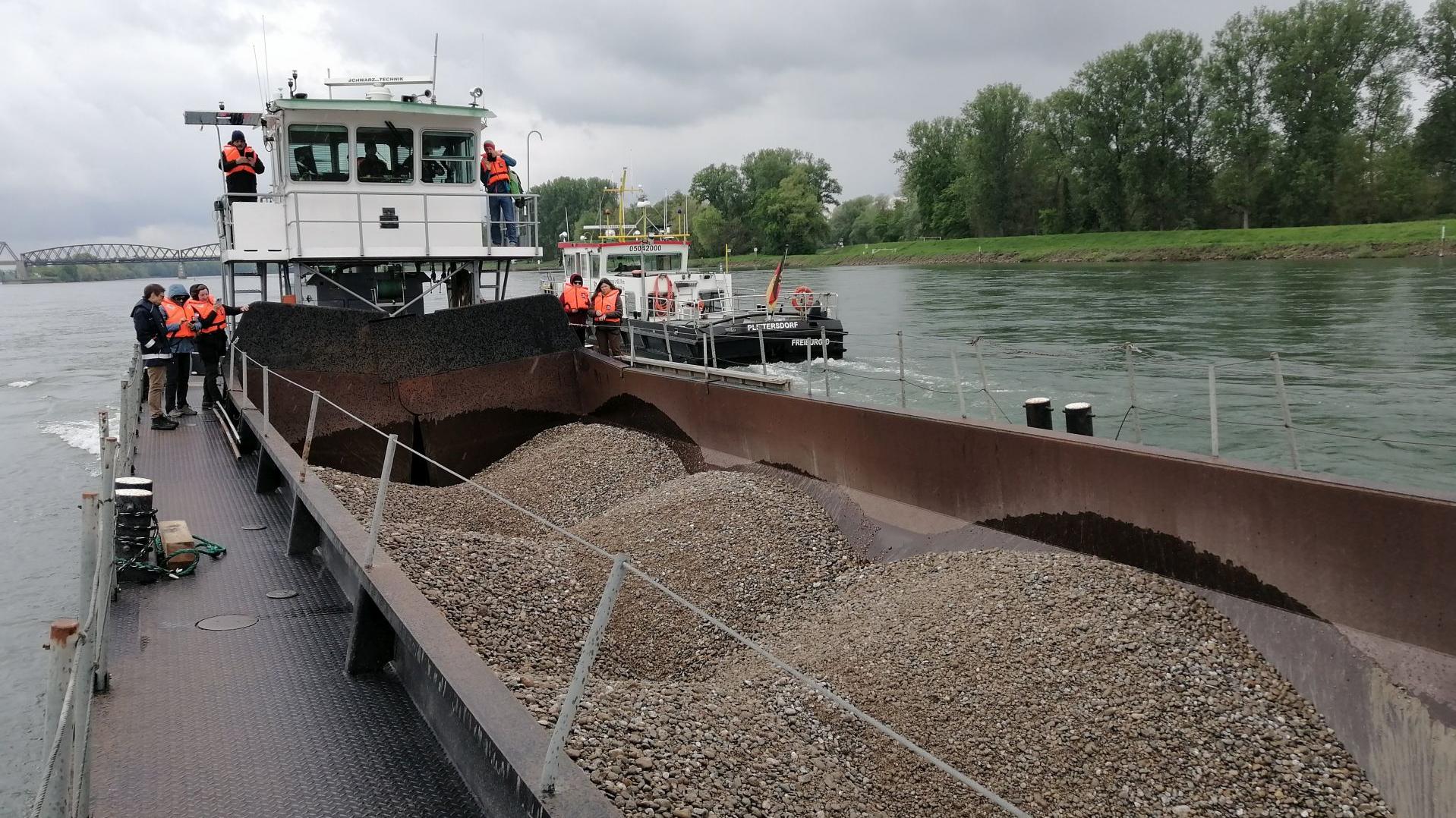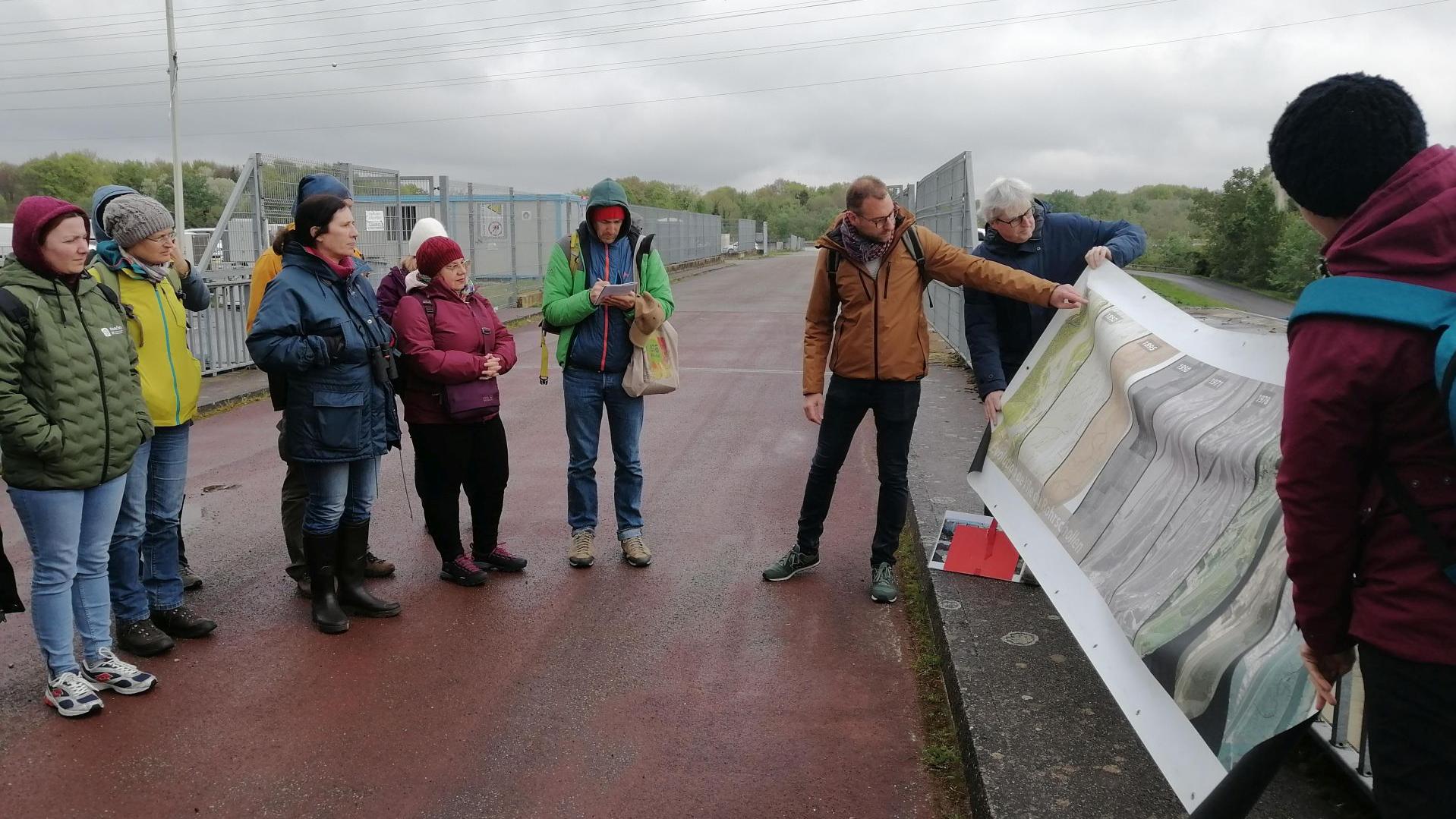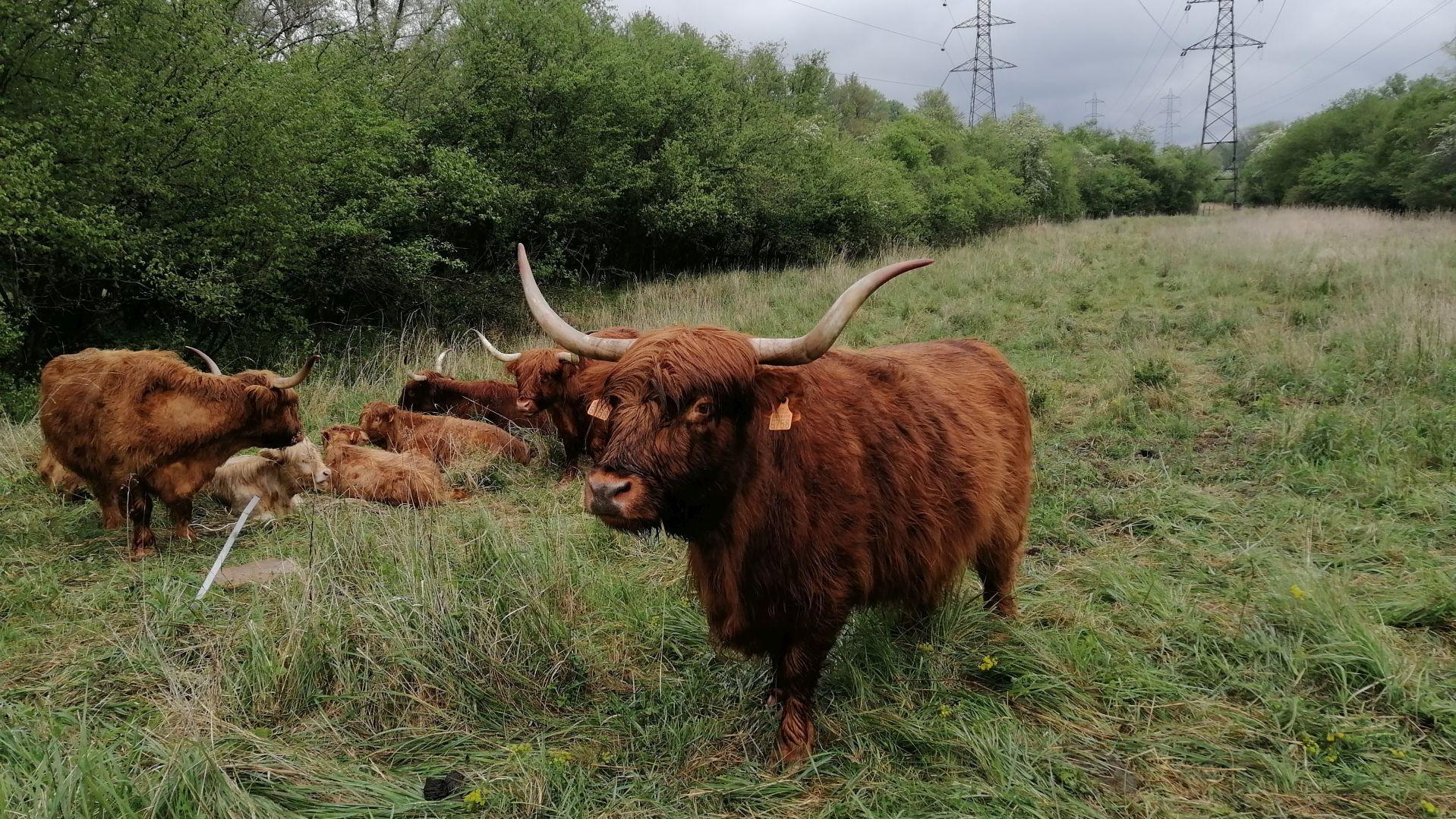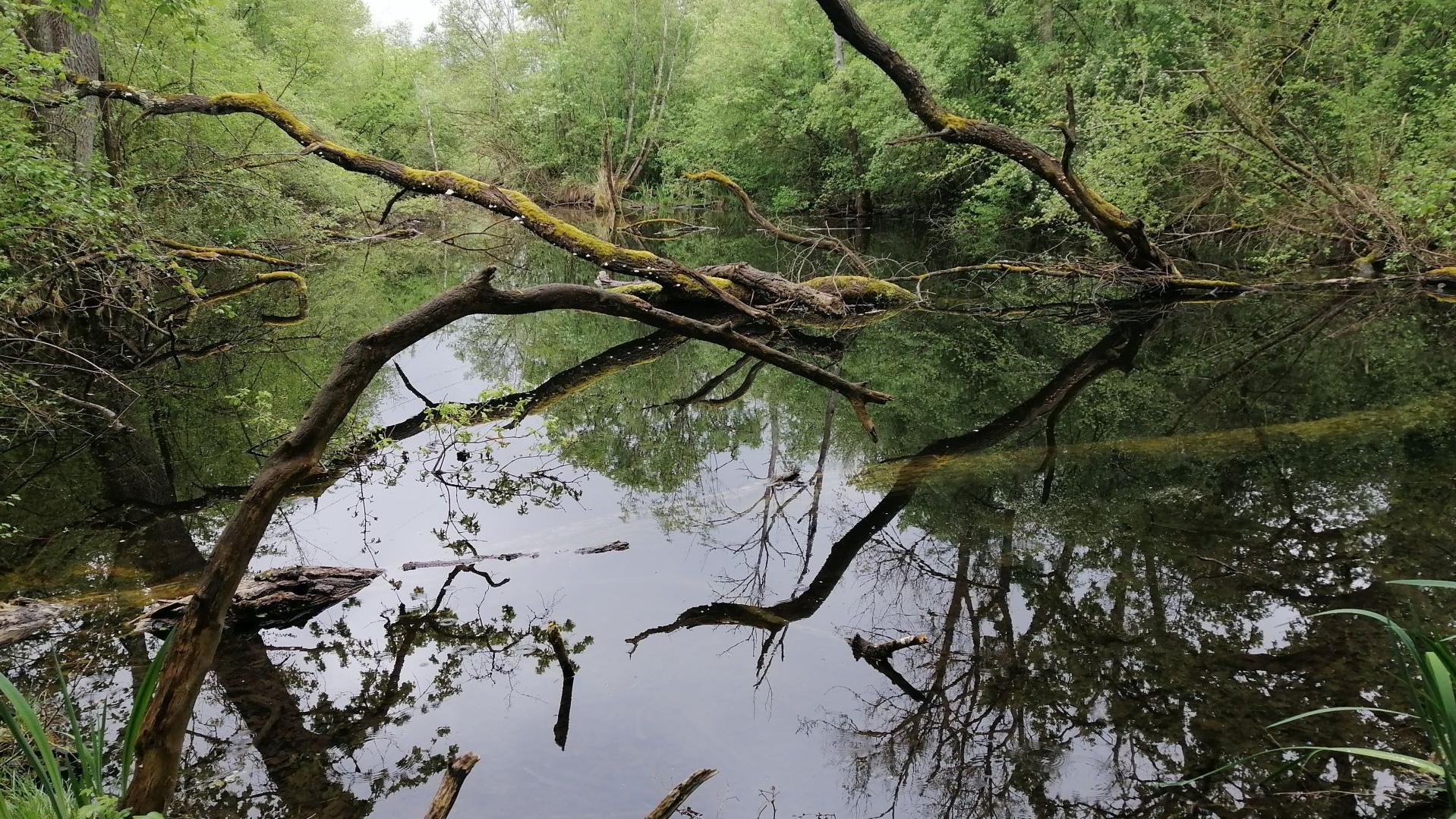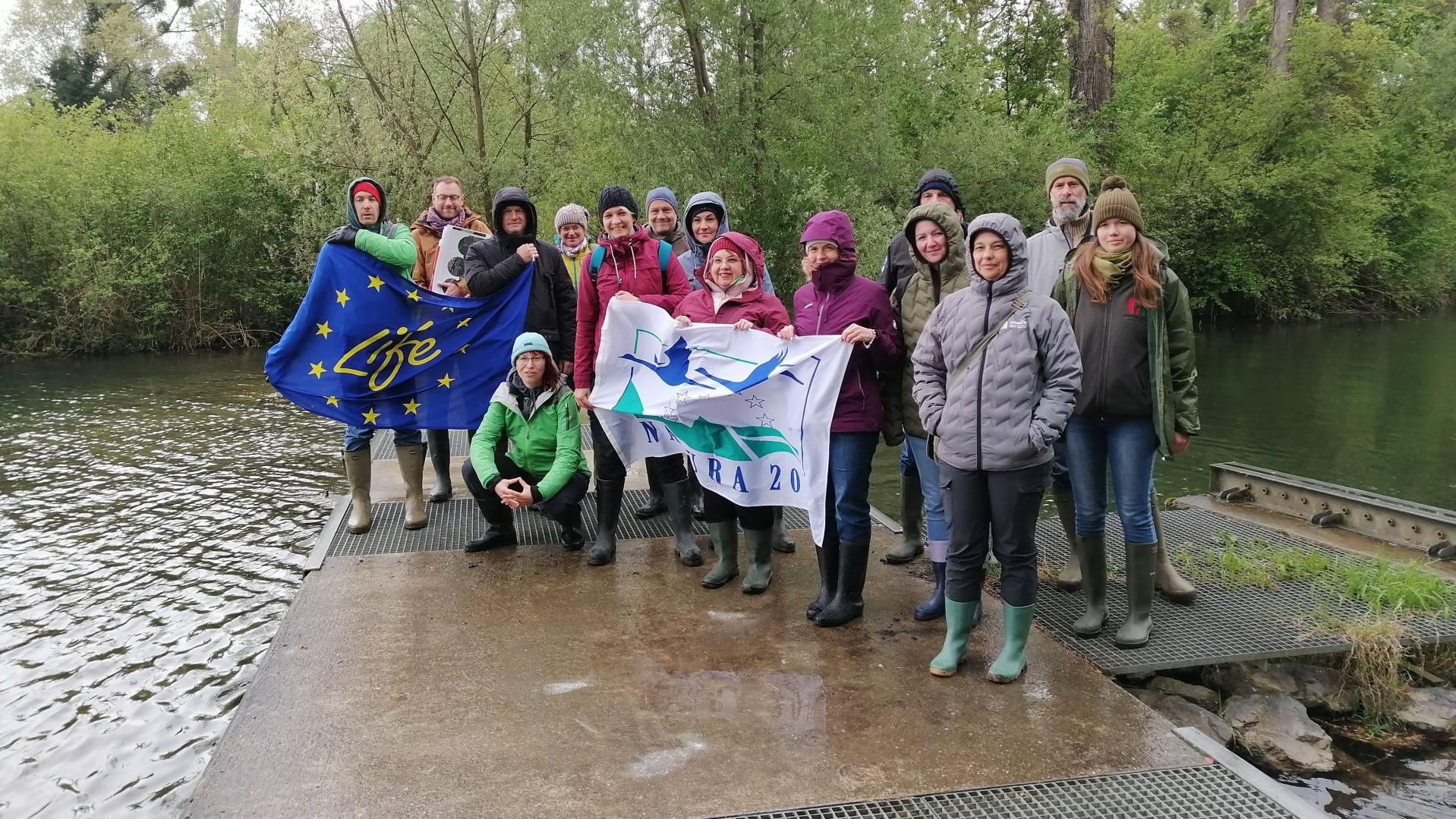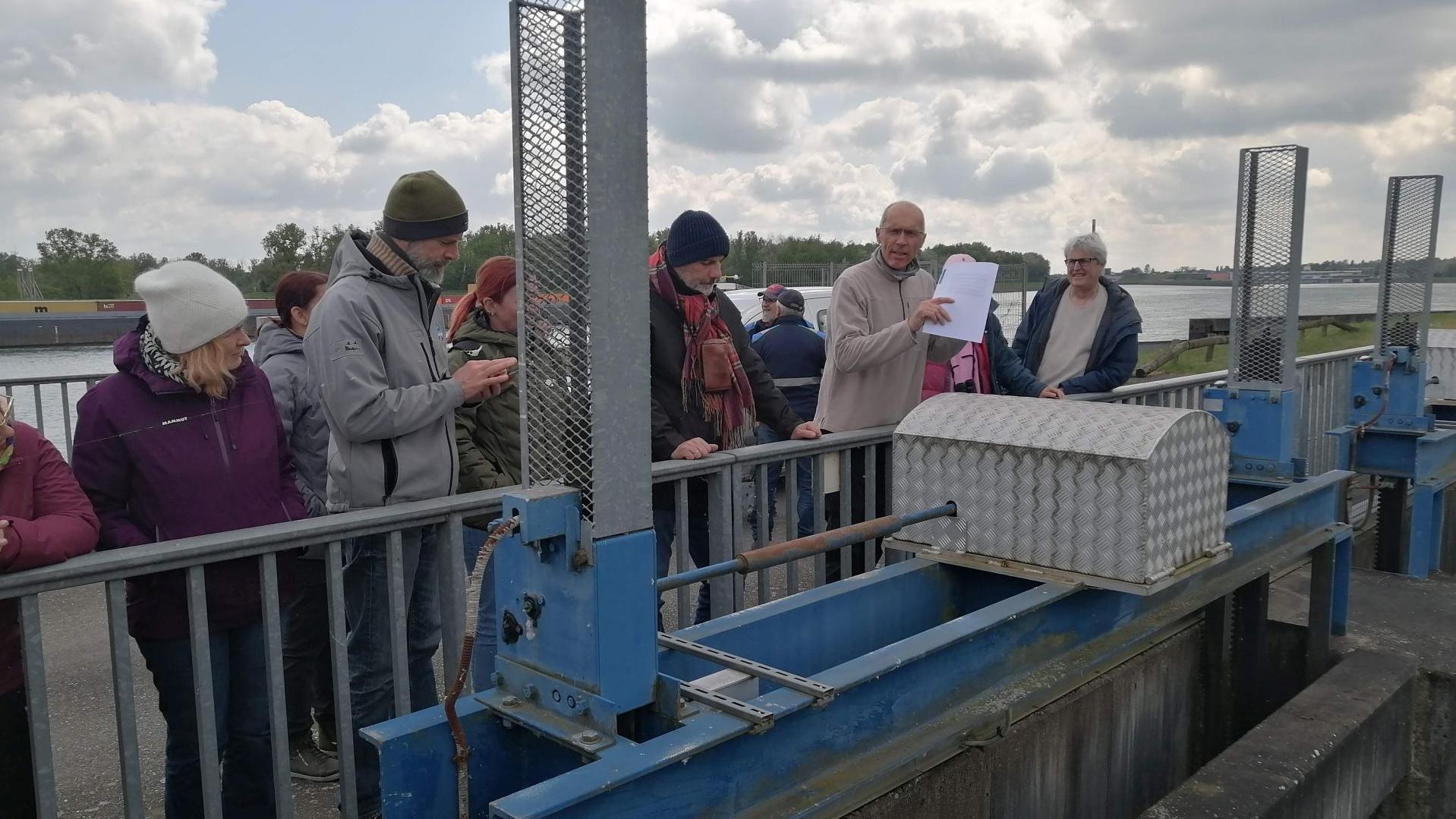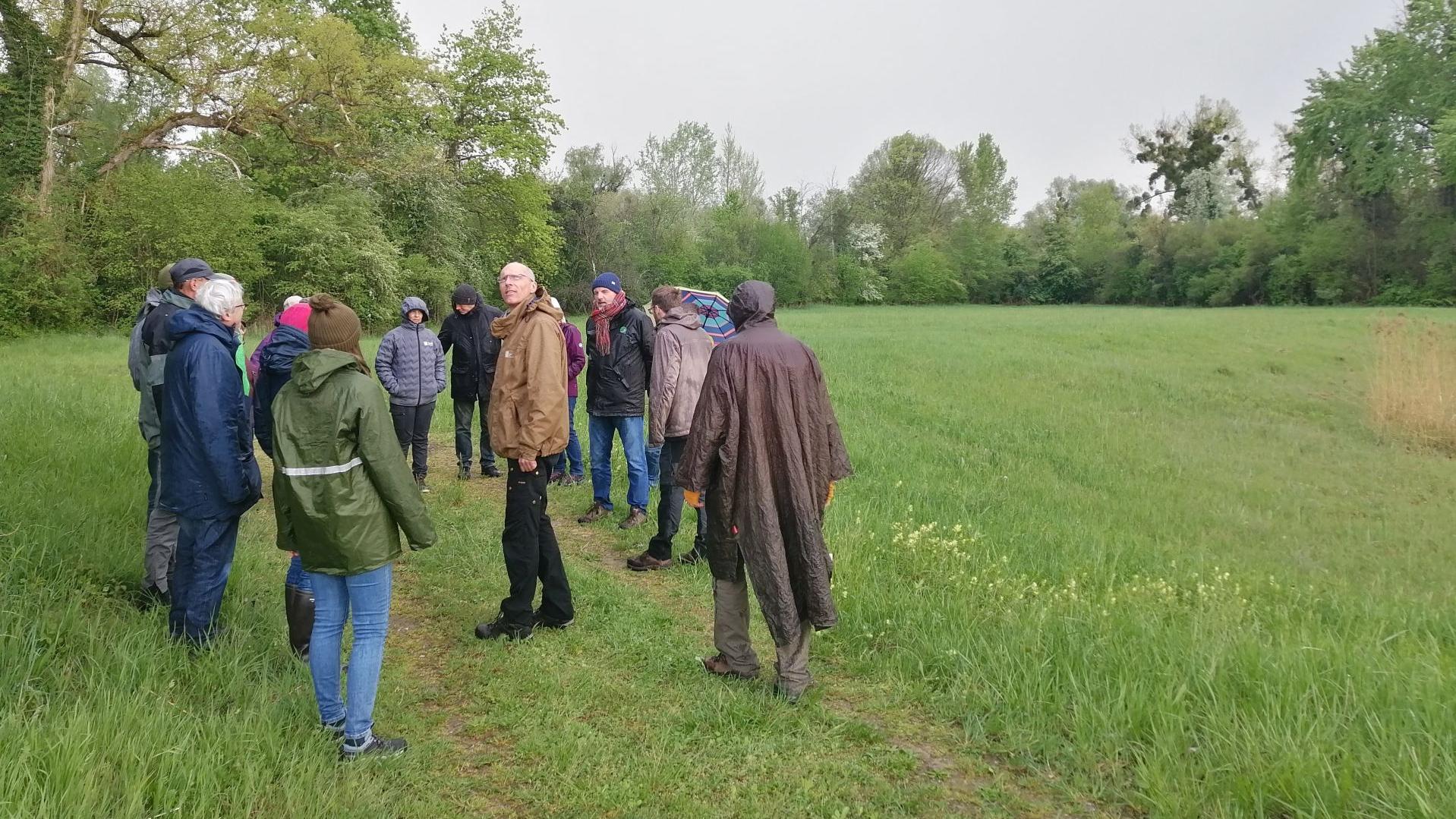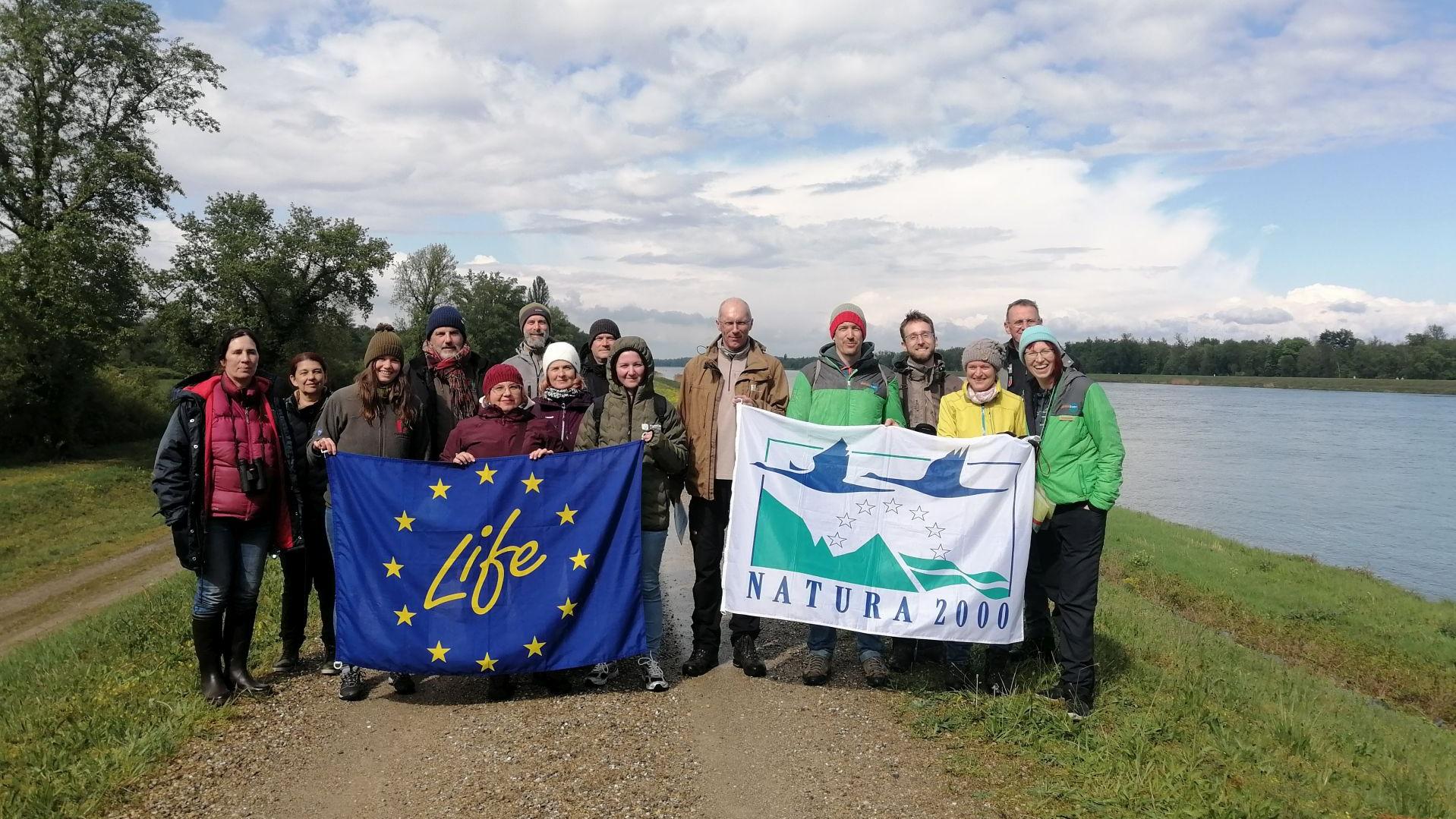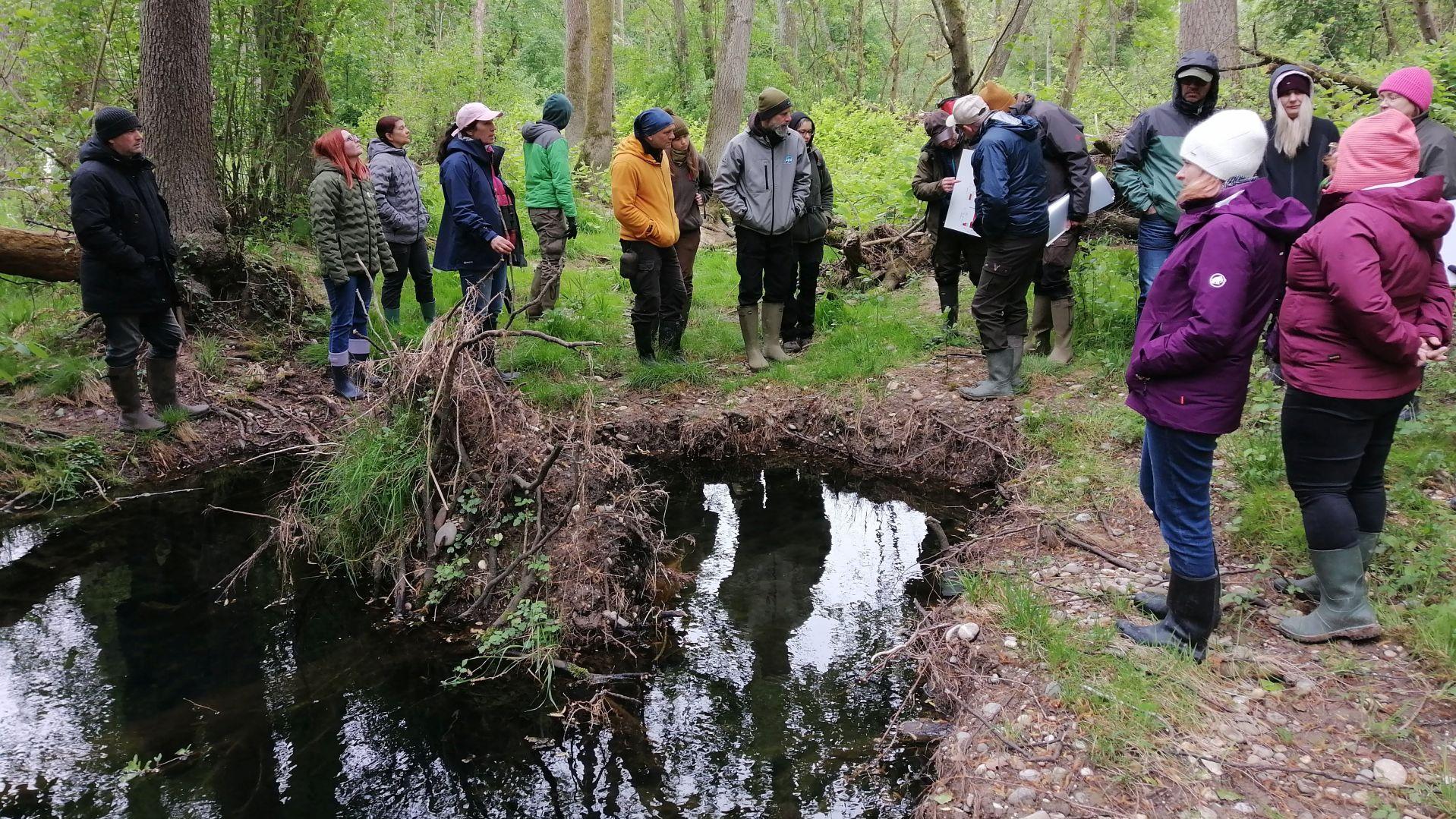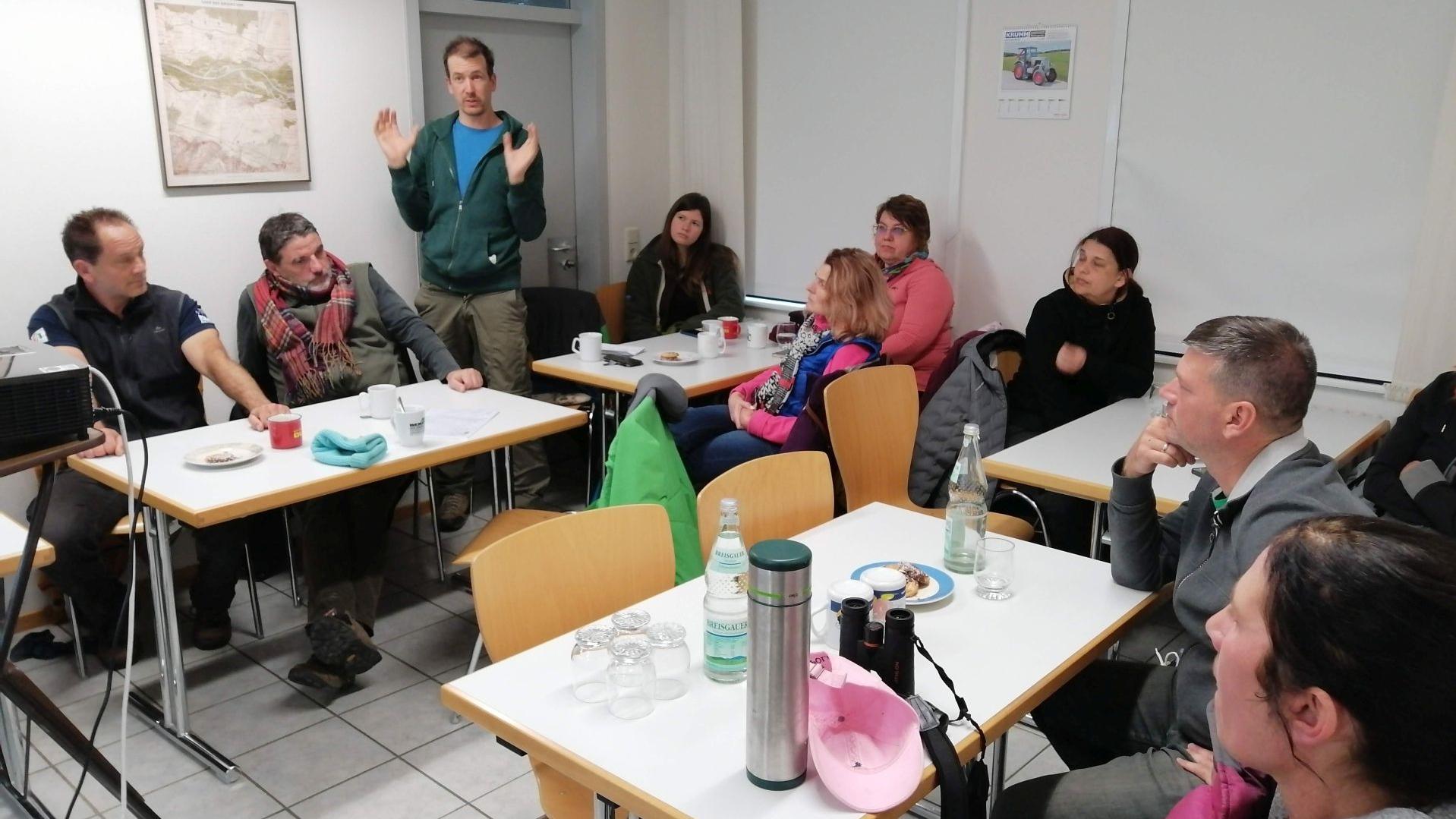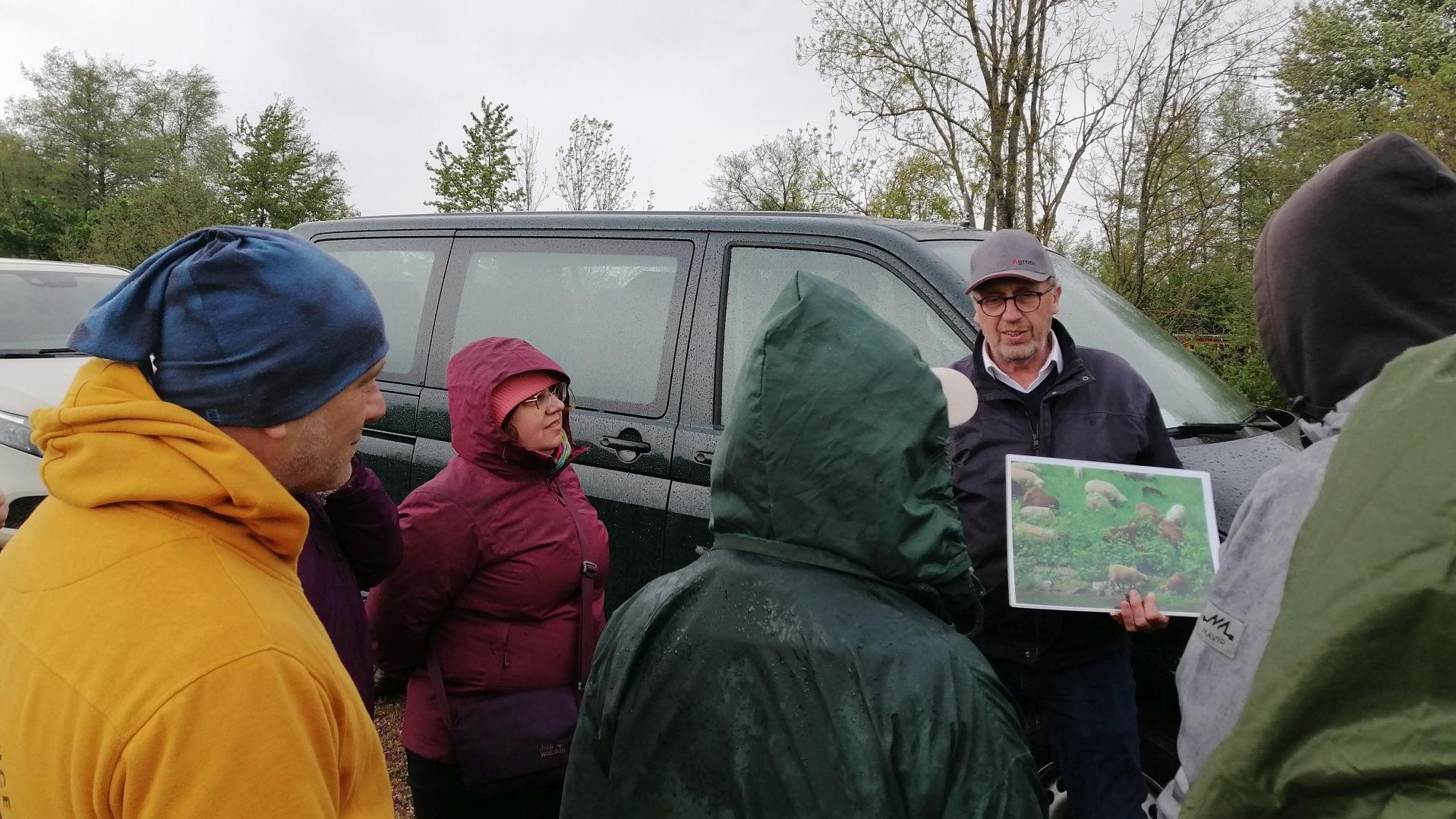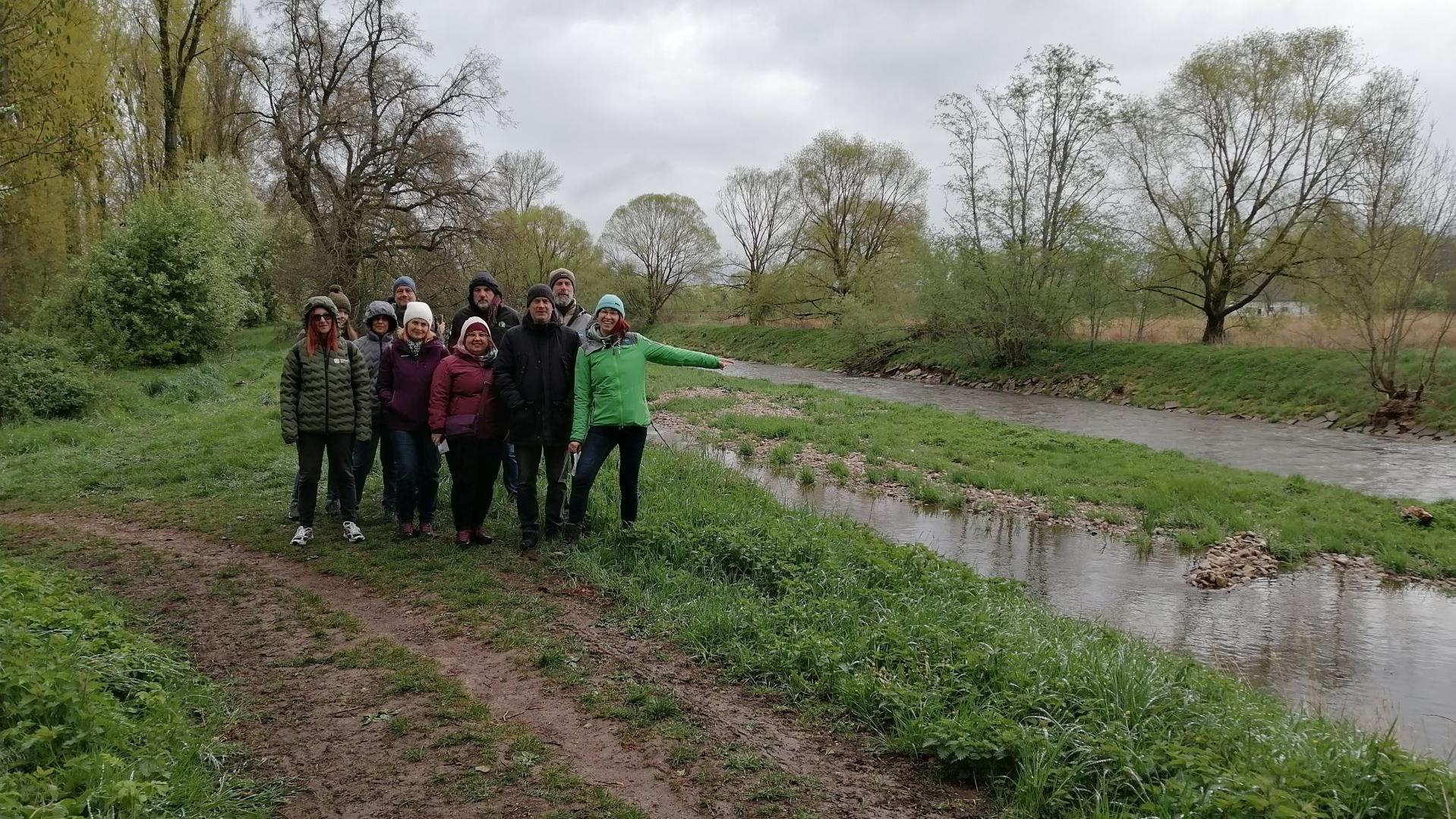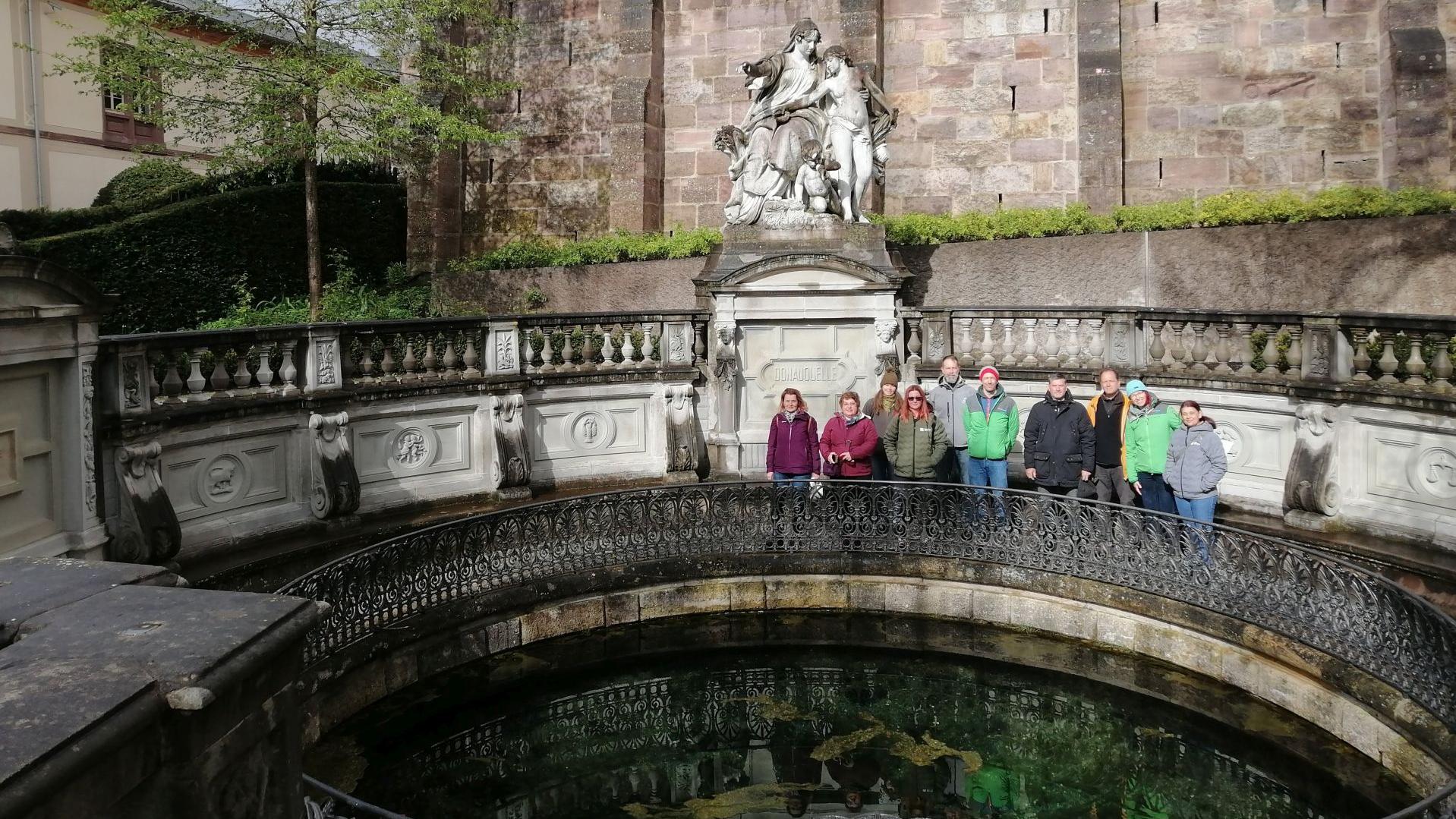Between April 17-19th a big delegation of eight of the LIFE WILDisland partners from all along the Danube (Austria, Hungary, Croatia, Serbia and Romania) visited the river Rhine in Germany and France in order to learn more about the revitalization projects and measures along the second-longest river in Central and Western Europe and the most intensively used European waterway.
While traveling to the exchange, several partners could visit one of the WILDisland project site – the Mouth of Ussel River in Germany on April 16th. We were hosted by our colleagues and DANUBEPARKS family from the City of Ingolstadt, Department for Health, Climate Protection and Environment, who helped Uniper to develop the concept and participate in the project. The technical plans have already been prepared, submitted and approved and it is expected that the embankment removal will already start at the end of the year.
After the long trip, on the first day (April 17th) we were hosted by the Waterways Administration at the Iffenzheim Hydropower station and learned more about the sediment management practices, preventing the further deepening of the riverbed of the Rhine, a problem that also occurs along the Danube. We boarded a ship which is depositing gravel, sand and fine sediments downstream from the Hydropower station and this was a really interesting experience. In the afternoon our delegation was hosted by the colleagues from the Landespräsidium Karlsruhe and the KIT Aueninstitut, who lead us to the area of Wintersdorf and the Tomato islands at Au am Rhein, where actions for embankment removal and reconnection of side-branches similar to the WILDisland project have been carried out.
On the second day (April 18th) we visited the French part, hosted by Region Grand Est, University of Strasbourg, Pôle des Réserves Naturelles rhénanes, Office Français de la Biodiversité and Voies Navigables de France, starting from the alluvial restoration Project of the National Nature Reserve of the Rohrschollen near Strasbourg. There we discussed the improvement of the hydrological regime with semi-controlled flooding of the area and habitat management with grazing. Then we visited the Polder Erstein and the national nature Reserve of Erstein. This is one of the only two polders in France, designed to provide flood protection and secure navigation and hydropower production trying to also facilitate nature conservation and floodplain forest protection in the area. We discussed forest management practices, grazing and combating invasive species with the managers of the Reserve.
Our last day (April 19th) was devoted to the restoration projects carried out by the Landespräsidium Freiburg. We visited the „Revitalisierung Taubergiessen“, forest renaturation areas and discussed the current monitoring program following the dam removal along the Leopoldskanal. We then drove to the Landesbetrieb Gewässer at the Regierungspräsidium Freiburg. Here we were guided along the revitalized section of the River Elz, where dams have been replaced, river-course has been restored, grazing has been introduced and some specific landscape elements to provide fish shelter and bird nesting sites have been developed. There we also discussed ways to combat invasive species.
Following the official program, the biggest part of our delegation stopped at the source of the Danube in Donaueschingen, Germany. We walked along the river Breg just before it meets the river Brigach and they form the Danube together. We saw the very first WILDisland in the course and was happy to take a joint photo as a DANUBEPARKS family and representatives of institutions all along the Danube course.
We would like to cordially thank all our hosts and colleagues from Germany and France from all the authorities, state institutions and NGOs, who devoted time and effort in showing us their project sites and experience and we hope to establish fruitful cooperation and future exchange!
It was very inspiring to learn more about the challenges and success along the Rhine and put our own efforts in better context, helping us acknowledge and cherish our own cross-sector cooperation along the Danube even more.




